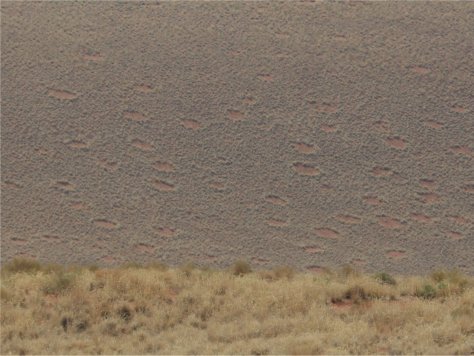“You’re suggesting we need a paradigm shift in how science interacts with society.”
“Yes I am.”
Kim Stanley Robinson has been around for a while, and is probably best known for his Mars trilogy. A lot of his science fiction reflects his own political agenda—strongly environmentalist and anti-capitalist, with a conviction that responsibly applied science is the way to a sustainable future.
I first encountered him when I lifted the first edition of Red Mars off the shelf in a book shop. After leafing through it for a while, I did something I don’t often do—bought a hardback edition of a novel by an author I’d never read before.
Mainly, I was entranced by Robinson’s long, loving descriptions of landscape, and of people moving in landscapes. Sometimes not much happens for pages on end, as people just wander along, talking science and politics and admiring the view. And sometimes, it has to be said, the stuff that does happen seems to be in there just so that the characters can go someplace and have a striking experience—in the Mars trilogy, for instance, there’s an astonishing episode involving Sufi dervishes dancing on the edge of the Vallis Marineris, the largest canyon on Mars. It doesn’t have much to do with the story, and it doesn’t actually make much sense, but by cracky it’s an amazing image, beautifully conjured by Robinson.
This leisurely, discursive, episodic style drives some people crazy—Robinson’s reviews on Amazon usually involve a selection of furious one-star outpourings, often written in capital letters: “This was the most BORING book I have EVER read!!! AVOID!!!”
But if you like that sort of thing, Robinson does it better than pretty much anyone else on the planet at present.
This volume, Green Earth, started life as a trilogy: Forty Signs of Rain (2004), Fifty Degrees Below (2005) and Sixty Days and Counting (2007), collectively called the Science in the Capital trilogy. (You’ll sometimes see it rendered Science in the Capitol, but “Capital” is the version Robinson uses in his preface to Green Earth.) Robinson has trimmed about a quarter off the length of his original three books to convert them into a single, hefty novel—it runs to over a thousand pages in the paperback edition.
I’d been put off reading the original trilogy because of its theme—the near-future politics of global warming. It didn’t seem like a particularly gripping prospect, and I was afraid it would tempt Robinson into riding his environmentalist and anticapitalist hobby-horses a little too hard. But the appearance of the shorter version seemed like a good reason to come back and give it a go.
As the name Science in the Capital suggests, this is a book about scientists trying to talk to politicians. And Robinson is very good at evoking the sort of frustrations that produces—both for the scientists, who think they have a very straightforward message that politicians are failing to absorb; and for the politicians, who can’t get the scientists to understand the trade-offs that are required in order to get anything done in a political setting. But by the end of the first section of the book, central Washington D.C. has been flooded by extreme weather and rising sea levels … and suddenly there’s a concerted political will to get something done about climate change.
There’s a lot of shouting down telephones, a lot of serious scientific debate, and a lot of sitting in committees (Robinson evokes the horror of committee meetings very well; I think he must have sat on a few in his time). But there are also big climatic set-pieces—the storm that floods Washington; the evacuation of a low-lying Indian Ocean island as its sea defences are overwhelmed by the sea; the harsh winter that immobilizes a city and starts killing its citizens; a massive geoengineering project to restart the stalled Gulf Stream.
And, being Robinson, it’s also about a whole lot of other things as well—the joy of running; the tyranny of being the parent of a toddler; espionage; biotechnology; Buddhism; reincarnation; how to be homeless; how to live in a treehouse; evolutionary sociobiology; the serenity of rock climbing; living with a brain injury.
To cram all this in, he does his usual trick of moving characters around on sometimes rather flimsy pretexts. At one point the parents of the Toddler from Hell undertake a long-haul plane journey that they could have easily avoided. Forget restarting the Gulf Stream—that was the most improbable moment in the book, for me.
As usual, I forgive Robinson these implausibilities because the journey is so much fun. As just one example, I cherish his translation of what birds are saying to each other as they sing in the trees: The rain has gone! The sun is here! I am here! I am singing!
My only problem, and it was a serious one, was that none of the central characters was remotely likeable. Frank, the homeless tree-house-dwelling sociobiologist was certainly interesting, but his endless oscillation between impulsiveness and indecision got wearing pretty quickly. And Charlie and Anna, a policy wonk and a scientist who are the parents of the ghastly toddler, were so self-centred and driven it was difficult to sympathize with their various crises at work and at home. In a way, Robinson is a victim of his own success, here. He created complicated, believable people—but they’d be less irritating if they seemed less real. (I’m reminded of Claire Danes’s performance as Carrie Mathison in Homeland. That was a superlative piece of acting, but it produced a character so intensely annoying that I simply couldn’t be in the same room.)
So despite Robinson’s evocative and lyrical writing, I find the thought of meeting Frank, Charlie and Anna again profoundly depressing. I won’t be rereading this one.
or



















